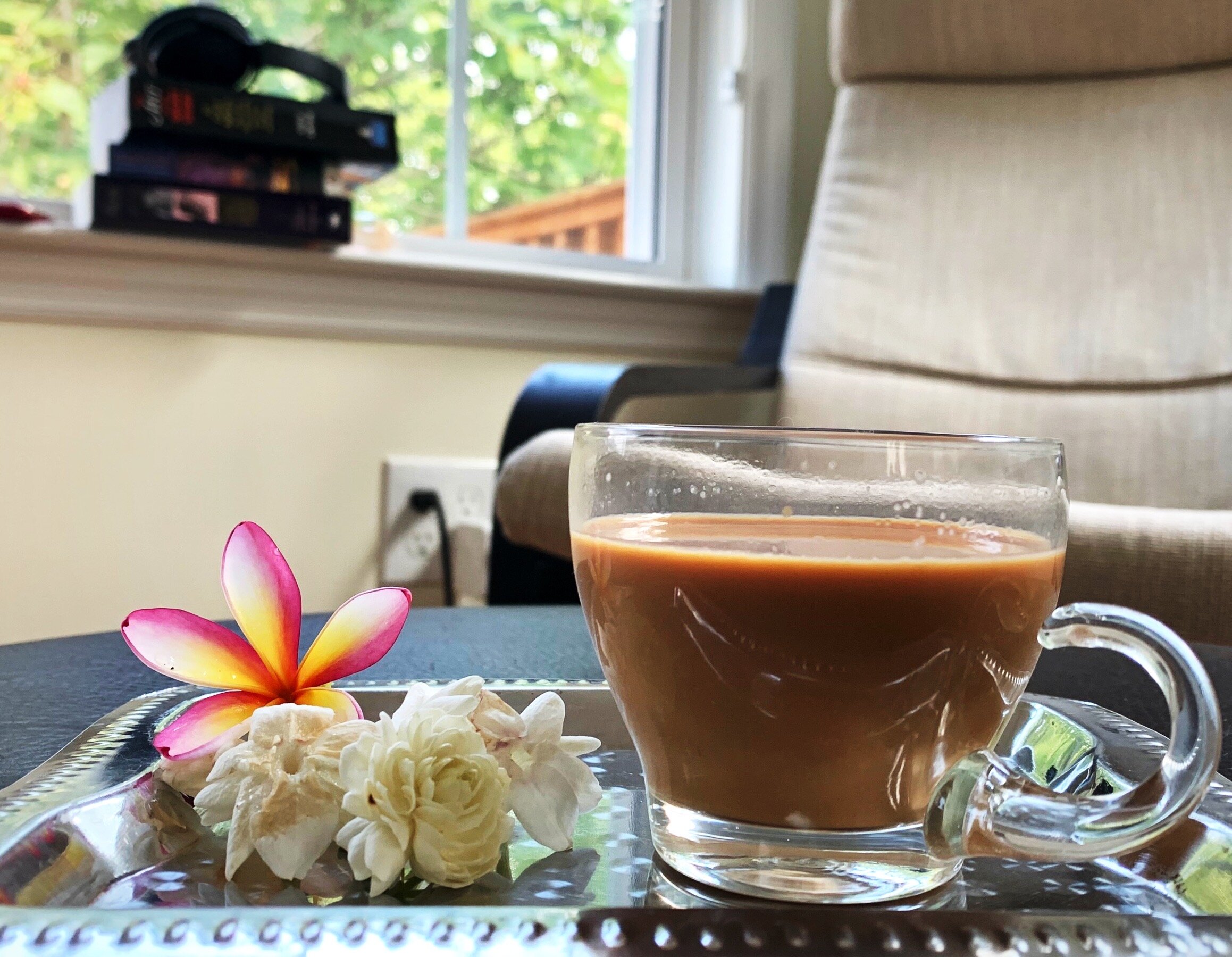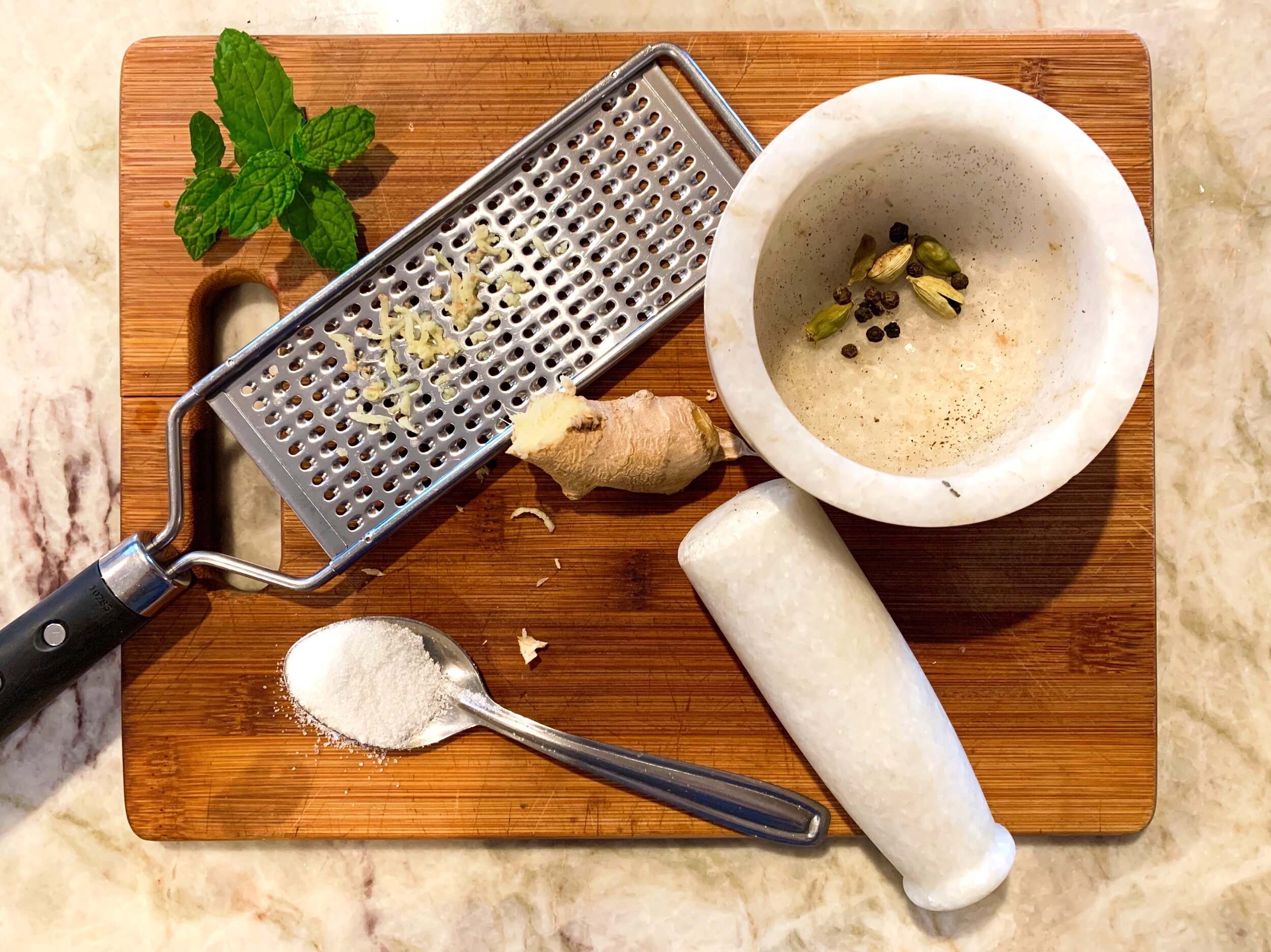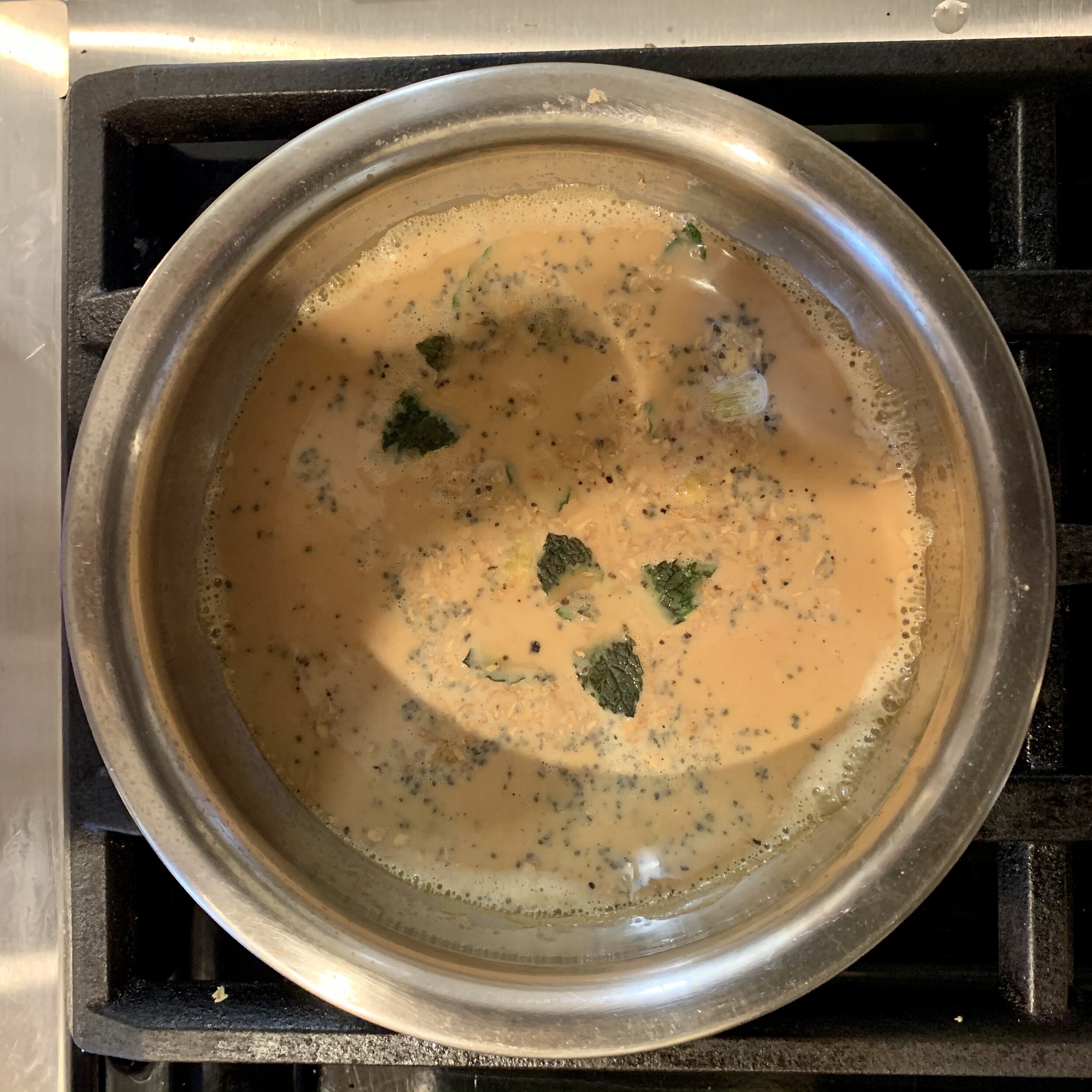Chai time somewhere
My first memory of chai is the one prepared by my aunt. Her chai is karak or strong, but milky, sweet, and spicy. I recall drinking it daily during my summer holidays in Bombay, taking a sip and letting the sweetness wash over me. The spice comes from the homemade chai masala she makes--an amalgamation of cardamom, black pepper, cloves, and dried ginger that has been finely milled into a powder. Its flavor follows the sweetness, reaching the very bottom of my throat, grabbing it and shaking me back to life.
For my family, chai is the elixir of life. It is had at least twice a day and offered to all who enter our home. And for most of my life, I have consumed it within the walls of my home in Tennessee and Bombay, knowing it to be a lasting testament of my Gujarati heritage.
**
Years later, after I graduated from my small liberal art college in Massachusetts, I found myself in the fields of Saurashtra-- a region in Gujarat that sits off the coast of the Arabian Sea. Saurashtra is where my great-grandfather once owned a large farm, where my grandmother was born and raised, and where I have returned as a field researcher to study the groundwater consumption practices of farmers.
Chai in Saurashtra’s villages was distinctly different from what I am accustomed to. It is a simple preparation made with little fuss. There is no ginger or cardamom or black pepper. The chai is amply sweetened and often prepared atop a charcoal stove which imparts a slightly smoky flavor to the tea. The sweetness hits the tongue first--first from the sugar and then from the fresh water buffalo’s milk--and a creamy mildness follows. Farmers keep in their fields plastic canisters of sugar and tea and utensils, ready on a moment’s notice to brew the simple concoction.
Farming in Saurashtra is back breaking, arduous labor that begins with the break of dawn and ends only after the sun sets. Chai cuts the toils of these long days, giving vitality to its drinkers, and a respite from the work.
Neighbors and visitors offer opportunities for welcomed breaks. I learn that every guest occasions a chai and chai can be drunk anywhere. I have lost count of how many saucers of chai I have had each day I stay in the field--ten, maybe twenty? For every farm I visit, at least one and often two.
Guests are first offered steel bowls, or lotas filled with water. Then, saucers are passed around into which the host pours from a tea kettle a small shot of piping hot tea. Tea is to be carefully sipped from the saucer. Sometimes the host is a sweaty farmer dressed in white cottons; sometimes a young child, barefoot and excited; sometimes a woman with tattooed arms and earrings so heavy her earlobes hang low, nearly touching her collarbones.
At every farm I visited, we sat on khatlas or hand built, woven beds under the shade and sway of trees and made conversation. Farmers are curious to know who I am, where I am from, and why I am there. It is baffling to them that I have returned--three generations later-- to inquire about their livelihoods. Had my family not worked hard to break free from this life? I have no response, but in turn, ask them questions about their crops and irrigation methods. I practice my Gujarati--my first language-- learning new words, and I swell with pride as sentences begin to flow smoothly from my mouth.
**
I alternated between weeks in the field, and in Ahmedabad. This dense metropolis is where my office is and where I rent a room in a flat. My office is the second floor of a small bungalow owned by an elderly couple and their eldest son. Everyday, when my mind lulls or the afternoon heat feels inescapable, I walk down the quiet residential street to the corner where a chaiwala has set up shop. He stands behind his chai counter, stirring an aluminum vat of chai which perpetually simmers, bringing it to a roaring boil when customers approach. His features are distinct: kohl lined hazel eyes, a full head of graying hair, and teeth stained a deep red from pan or the betel nut that he chews. The chaiwala is a quiet man, but he never fails to acknowledge my presence. When I return from a trip to the field he says, “I haven’t seen you in many days. Have you been out of town?”
As a dry city in Gandhi’s home state, Ahmedabad is bereft of a bar culture. But this city is in heat, and it is thirsty. Chai drinking is ubiquitous here. In the daytime it is the medium through which business men flirt to tactfully negotiate deals; at night it is the occasion for friends and lovers to meet.
I start leaving my flat, late at night, to meet new friends. We walk down an old university road that has taken on a different life under the cover of night. Food vendors selling chai in clay pots and maska bun with butter and jam line the street. I take in the scene: families in air conditioned cars drinking chai; lovers discreetly holding hands; children in tattered clothes selling balloons. It is strikingly different from the sleepy villages of Saurashtra. We order cups of chai and sit on the sidewalk. The tea is spiced, sweet, but not very strong.
One morning, I awake in a new bed to a tall, brooding, bearded man who has brought me chai in a mug. His chai is only lightly spiced with fresh ginger and there is no sugar. He lights a cigarette and takes a sip. We plan our day: office, errands, dinner, maybe a movie. These plans are mundane but they feel special to me, a recent college graduate who has only known life to be with her family or alone. This is a new life in the making, independent of my past. Just as I have made the practice of drinking chai my own, I have made this city my home.
**
After eighteen months, my time as an RA comes to an end. I leave Ahmedabad late one warm January night and find myself in my new city of Chicago. The winter is bone chilling. I desperately try to hold on to my home, but it begins to slip away. My afternoon chai is replaced with bags of bland herbal tea, the fields of Saurashtra with a dual screened monitor, dinners with the bearded man with takeout boxes for one. I stutter as I string together sentences in Gujarati. I feel severed, with my mind far away, and for months, I exist as a phantom.
**
It is a whole year before I find myself in an Uber driving into the heart of Ahmedabad from the airport. I have made this trip several times before, but suddenly I feel like a stranger. Many of my friends have left this city; my old apartment is occupied by a new family; my relationship with the bearded man has proven to be unsalvageable.
I visit my old office in search of something familiar--something unchanged--something that is only mine—in this place that has left an indelible impression on my heart. Instead, I am greeted by new faces and a new office layout. The elderly couple and their eldest son are away in Alabama visiting their younger son and his American wife. Dejected, I walk down the street to the corner, where I see the chaiwala standing behind his vat of chai. “Ek chai,” I order. He hands me a glass of chai, shyly smiles, and says, “I haven’t seen you in many days. Have you been out of town?”
***
Chai Recipe For Two:
This recipe borrows from the many cups of different chais I have know. It is not exact in its measurement, but it is also quite forgiving. Don’t like or have a spice? Skip it. Like your tea very gingery—add more!
I use looseleaf black tea from the Indian store. Brands you can try include: Girnar Royal Tea, Wagh Bakri, Brooke Bond Red Label, and Taj Mahal.
Ingredients:
6-7 pinches of Indian, loose leaf black tea. Find it an Indian store or online.
1 medium sized mug filled with water (not brimming to the top)
1/2 to 3/4, medium sized mug filled with whole milk (I use the same cup that I have used to measure the water). This depends on how milky you like your tea. I like mine with around 3/4 of a cup of milk.
6 whole black peppercorns
4 pods of cardamom
6-7 leaves of fresh spearmint
2 inch nub of fresh ginger. I like my tea with lots of ginger. Add according to taste.
Sugar. I use about 3 spoonfuls for two cups. Depending on your preference you can completely eliminate it or add more
Methodology:
Grate the ginger. Using a mortar and pestle, grind the pepper and cardamom to a coarse powder. In a pot add water, ginger, fresh mint leaves, ground cardamom and pepper, and looseleaf tea, If adding sugar (which I recommend!),put it in too. Bring to a gentle simmer. You should be able to smell the spices!
Once the tea is near boiling, add the milk. The tea should turn golden and slightly red in color. Let it come to a rolling boil. Bring your chai to a boil multiple times. In my opinion, this is an essential part of the recipe.It helps the chai condense and develop a thick, syrup like flavor. I like to bring my chai to a boil 3-4 times, time permitting. Be careful to watch over the pot, otherwise the milk will spill over before you know it.
Strain and pour into a mug.








